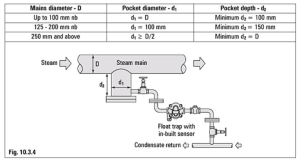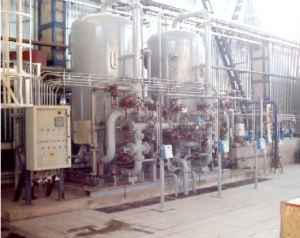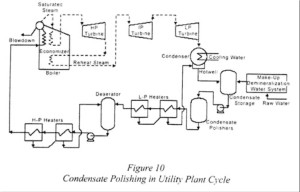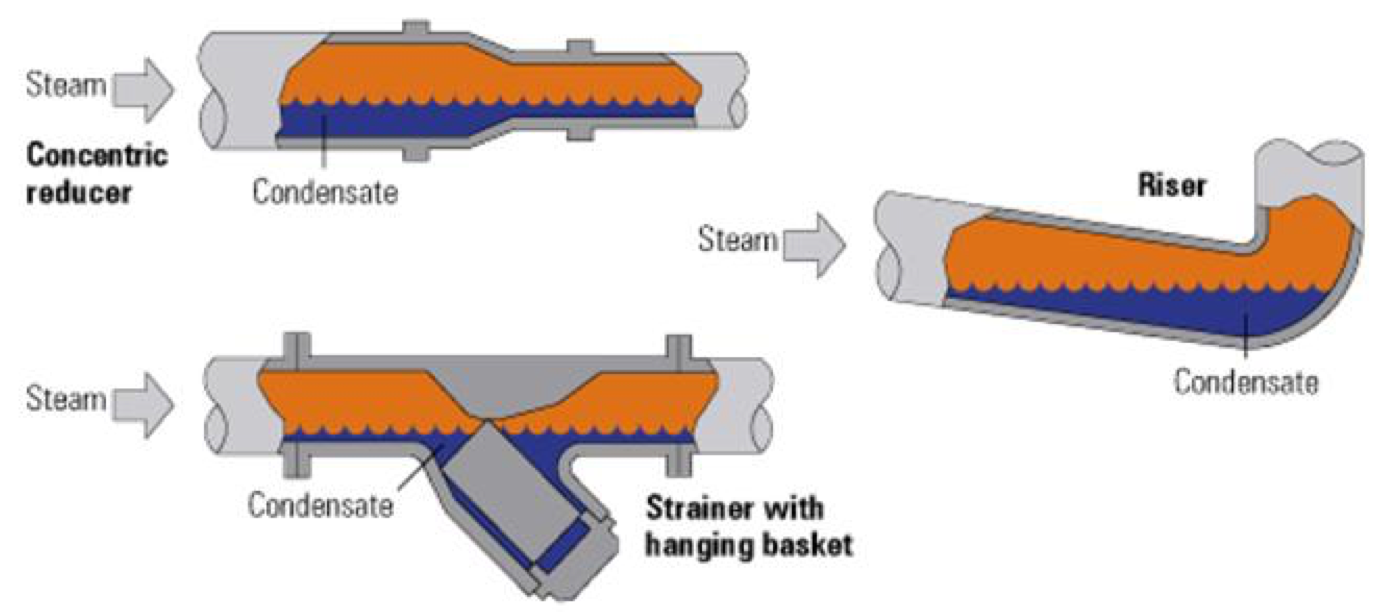Part 3: Condensate Systems
Condensate Systems
If condensate is not properly removed:
-
- May produce water hammer
- May be carried along with the steam to the turbine or process equipment with resulting damage.
Drainage system also removes air and carbon dioxide from the piping and prevents pitting and corrosion.
Drip or drain lines are installed at all points where the condensate may collect such as:
-
- Ahead of risers
- At ends of mains
- Ahead of expansion joints and bends
- Ahead of valves and regulators.
If the pipeline does not contain natural drainage points such as those listed above, then drains are provided at intervals of 150 meters.
Sources of waterhammer occur at the low points in the pipework. Such events are due to:
-
-
- Sagging in the line
- Improper support.
- Incorrect use of concentric reducers –
- Incorrect strainer installation
- Should be fitted with the basket on the side.
- Inadequate drainage of steam lines.
- Incorrect operation
- Opening valves too quickly at start-up when pipes are cold.
- Sagging in the line
-
Steam Pipe Drainage
At each drainage point a drip leg is provided. The purpose of the drip leg is to allow the condensate to escape by gravity from the fast moving flow of steam. The drip leg acts as a reservoir for the condensate giving the trap time to remove it.


Condensate Polishing
Ion exchange technology is often used for condensate polishing. Contaminants in steam system enter condensate system.
They are caused by:
-
-
- vacuum-induced leaks in the surface condenser
- corrosion of metal surfaces
- contamination from system repairs.
-


Condensate polishers
- Typically have high flow rates.
- Condensate temperatures are high and can damage the resin.
The original designs for condensate polisher systems incorporated two approaches:
-
- Deep beds of bead type ion exchange resins
- Powdered ion exchange resin precoating or covering a filter element.
Also use a combination of a non-precoat filter system followed by a deep-bed ion exchange resin system.
Activity: Images of Polisher Resin
Click the arrows to view images of polisher resin.
In all designs the purpose of the condensate polisher is twofold:
-
- Removal of suspended solids by filtration
- Removal of dissolved solids by ion exchange.
Types of Condensate Polishing
Low Pressure Steam Generator:
-
- Below 4000 kPa (580 psi), condensate polishing is normally not required.
Medium Pressure Steam Generator:
-
- Between 4000 to 16,500 kPa (2400 psi), condensate polishers are required to:
-
-
- Control silica,
- Control corrosion,
- Remove particulate matter
-
-
- Between 4000 to 16,500 kPa (2400 psi), condensate polishers are required to:
High Pressure Steam Generator:
-
- For pressures above 17,000 kPa, water chemistry becomes “zero solids chemistry”.
- Demineralization of make-up water is mandatory to purify water of contaminant ions, such as sodium and silica.
- Full-flow condensate polishing is used to remove soluble and insoluble corrosion products, and for removal of contaminants from condenser leaks.
- For pressures above 17,000 kPa, water chemistry becomes “zero solids chemistry”.
Condensate Polishing
Factors Affecting Resin Performance
- Particle size uniformity- impacts pressure drop across the resin bed.
- Filtration and capacity- Uniform particle size also helps with resin filtration and capacity.
- Ionic capacity- Total capacity and Operating capacity
Factors Affecting Resin Performance
- Bead integrity- Must be strong enough to remain unbroken during the conditions of operation over an entire cycle.
- Rinse and regeneration efficiency- Better regeneration results in more complete removal of ionic contaminants from the anion and cation resins.


